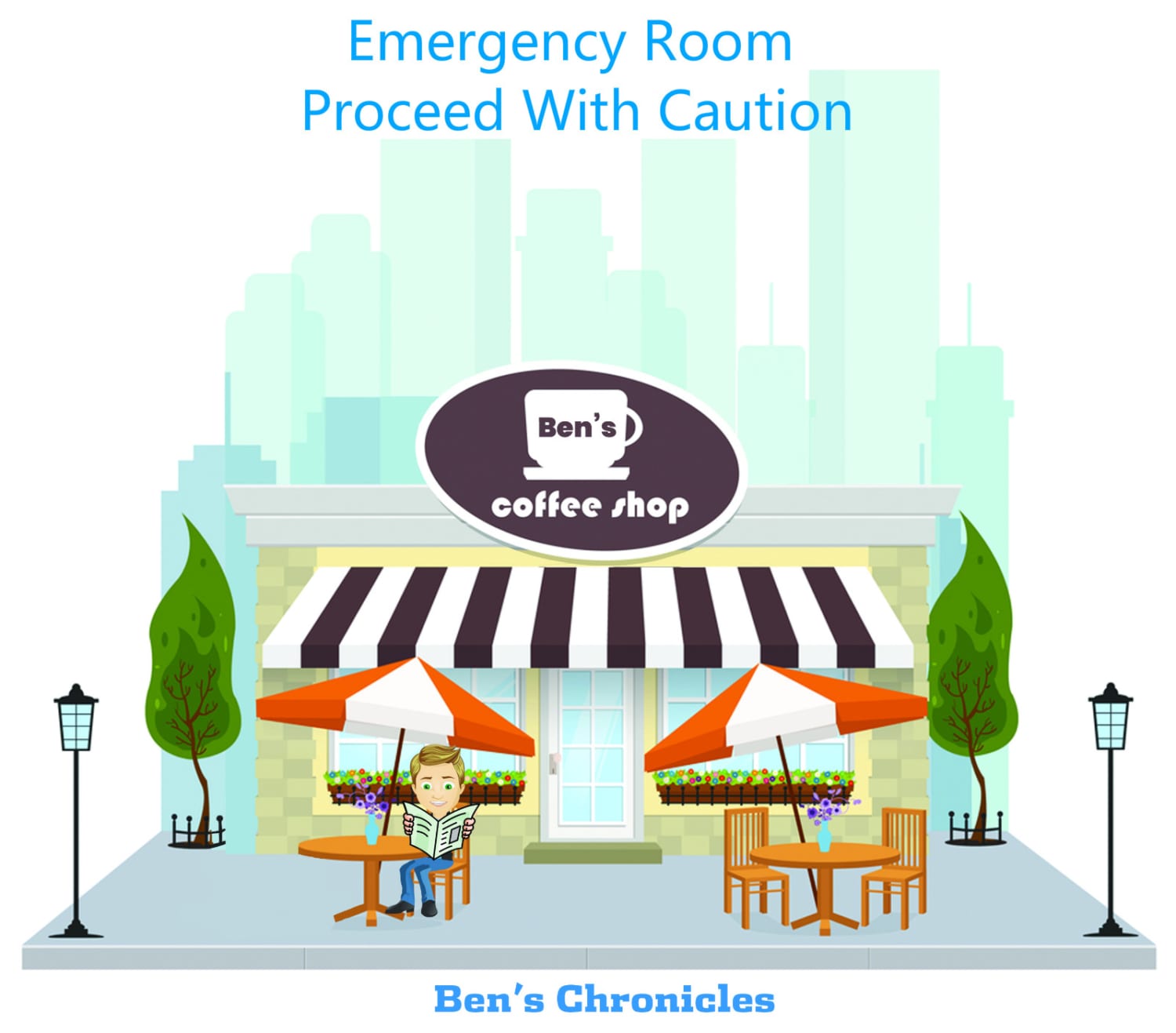Emergency Room – Proceed With Caution
Welcome to Ben’s Chronicles
Hello! I’m Ben from EINSURANCE. Trust me, I know there are plenty of things we’d both probably rather be doing than discussing insurance. But although insurance gets a bad rap, it does have its benefits; especially when you find the right coverage and carrier.
Unfortunately, throughout my life I have had a knack for being at the wrong place, at the right time. Given my gravitational pull toward bad luck, I wanted to share a few of my life experiences with you in hopes that my bad luck could benefit you. So, bear with me over the upcoming weeks, because I’ll be sharing little nuggets I’ve learned through navigating the insurance world. If my mishaps and theories don’t directly help answer any of your insurance related questions, I promise they’ll make you laugh, albeit at my expense…
If you would like me to discuss a specific topic, feel free to email me at askben@einsure.com.
Today our topic is:
Emergency Room – Proceed With Caution
A hospital is a sacred and often despised place. On one hand the services that are provided at a hospital are absolutely crucial, on the other, visiting the hospital often means that something has gone wrong. In either case, rest assure the costs associated with a respective hospital visit can be quite excessive. I found this out the hard way.
Minnesota blizzard + Window = Emergency Room
At the time I learned this valuable lesson, I was residing right outside of Minneapolis, MN, near the Mall of America. I had officially been calling Minnesota ‘home’ for the prior two years. Thus, the never-ending winters were no longer a big deal for me. Although I enjoyed my apartment, the building was in desperate need of a cosmetic update. The windows were encased with wood, which made for a great ‘cabin’ appeal from the outside, especially during the warmer months. But once the winter swooped in, this wood would expand and if you needed to adjust your windows for any reason, it would take quite a bit of ingenuity, sweat and elbow grease.
Low and behold I found myself enduring a typical Minnesota blizzard, with a thermostat that was stuck on 75 degrees. Typically, I’d ride the discomfort out and wait till the thermostat began to work again. This night however, I had the idea to simply crack the window and let a bit of fresh air in. Not only would it combat the unusually high temperature of the apartment, but also increase air circulation. In a sleepy stumper I made my way over to the window. As I reached to unlock the window, I begin to push on the wood portion that frames the window. Of course, given the weather outside, the window didn’t budge. Without hesitation my hand then slid to the glass portion of the window to gain more leverage. The next move jolted my attention, and adrenaline. Given the difference in temperature between the outside and inside my apartment, along with the pressure from the encasing wood, my hand went directly through the window. On its way out, my arm was undoubtedly cut.
I immediately ran to the bathroom, placed my arm under the faucet and allowed water to run over it. I tend to get queasy at the sight of blood, so these circumstances were far outside of my comfort zone. After a minute or so, my arm continued to bleed, and seemed as though it was not letting up. In addition to the natural angst from being cut, I began to get light headed from the sight of my blood. I sat down, wrapped my arm, and dialed for an ambulance. Minutes later they were at my door, and I was whisked away to the hospital.
Now that you’re okay, here’s your present…
Thankfully, the damage was minimal, at best. In fact, the bill for the services yielded far more damage than the broken window and cut. I learned relatively quickly that emergency room bills, or health bills in general, are not ‘all-inclusive.’ They are more of a highly itemized version of a receipt. As if you went to a healthcare supermarket, then asked for a specific room, doctor, drug, test, and anything else that can be billed separately. My bill contained charges for the ambulance, the emergency room I used at the hospital, and the doctor that consulted with me. I was lucky to have been taken to an in-network hospital, however, the doctor that helped me was out-of-network. Thus, even though my bill was blunted by being seen at an in-network hospital, the total expenses were still exorbitant. The ambulance fee alone would have taken me months to pay off. I undoubtedly was happy that I was cared for that night. Given the circumstances, I had no idea if my cut was emergent or not, and its always better to air on the side of safety. That said, my cuts were healed well before the hospital bills for that night were paid for.
That emergency room experience framed every future hospital decision I made in the future. Classifying a situation as an emergency or not can result in thousands of dollars in savings. By no means should you forego immediate care for fear of the costs. However, it is prudent to question whether you require an ambulance, or even an emergency room visit at all. Note that there are urgent care facilities that are typically available outside of hospital hours and cost a fraction of the price of an emergency room visit. Its also a great idea to have a notion of those in-network hospitals near your home. In any event, don’t completely rule out emergency room visits, just know when to use them; and when you do, proceed with caution!

 EINSURANCE
EINSURANCE
 EINSURANCE
EINSURANCE EINSURANCE
EINSURANCE